In this episode, originally released on July 8, 2019, host Jeremy D’Entremont interviews John Geurtsen. He is the vice commander of the U.S. Coast Guard Auxiliary Flotilla 11-1, which serves the Cape Cod area. John is involved with the public tours of Chatham Lighthouse.
Jeremy and co-host Michelle Jewell Shaw travel a bit north of the Cape for the history segment, which covers the early history of the first lighthouse on the North American continent, Boston Light.
You can listen using the player below, and a complete transcript follows.
JEREMY
You are listening to Light Hearted, the
official podcast of the United States Lighthouse Society. My name is Jeremy D’Entremont.
We are coming to you today from the somewhat famous study room three of the
Portsmouth Public Library. And with me today is my cohost, Michelle Jewell
Shaw. This is the first of three editions of Light Hearted we’ll be putting out into the world this week and all
three will feature interviews related to Cape Cod lighthouses. Thanks for being
with me for Cape Cod Week, Michelle.
MICHELLE
You’re welcome, Jeremy. Thank you for having me with you today. I always look
forward to it. I love going down to Cape Cod. They have so many beautiful lighthouses
down there. I’m planning on a trip later this summer.
JEREMY
Sounds like a good plan — just watch out for the traffic. Try not to leave on
a Friday afternoon.
MICHELLE
Definitely not.
JEREMY
For any listeners who might not know, Cape Cod is a peninsula that extends from southeastern Massachusetts 65 miles into the Atlantic Ocean, with a width of between one and 20 miles and with more than 400 miles of shoreline. Here are a few other interesting facts about Cape Cod. Since 1916, Cape Cod has been separated from the mainland by the Cape Cod Canal. It’s now considered one of the biggest barrier islands in the world, and Cape Cod shields much of the Massachusetts coastline from North Atlantic storm waves.
MICHELLE
The name Cape Cod was first used by the English explorer Bartholomew Gosnold in 1602. He named it because he and his men caught so many codfish around the cape. At first, the name applied only to the tip of the peninsula. Samuel de Champlain charted the Cape in 1606 and Henry Hudson landed there in 1609. Captain John Smith noted it on his map of 1614, and the Pilgrims made their first landing near present day Provincetown on November 11, 1620. They had their first encounter with native Americans nearby before they moved on to Plymouth.
JEREMY
Cape Cod developed as a large fishing and whaling center. It became a popular resort by the end of the 19th century as improved rail transportation made it more accessible to Bostonians. Wealthy people built large so-called cottages along the shore. In 1961, a significant portion of the coastline was designated the Cape Cod National Seashore by President John F. Kennedy. It was protected from private development and preserved for public use.
MICHELLE
Maritime traffic passing the cape was heavy by the 19th century. Barnstable County, which comprises Cape Cod, contains 18 standing lighthouses. That’s more than any other county in the United States. The waters off Chatham at the so-called elbow of the Cape were a menace, with strong currents and dangerous shoals. Mariners talked of a ghostly rider on a white horse that appeared on stormy nights, swinging a lantern that lured mariners to their doom. Two lighthouses were established in Chatham in 1841. It remained a twin light station until one of the towers was moved to Eastham in 1923.
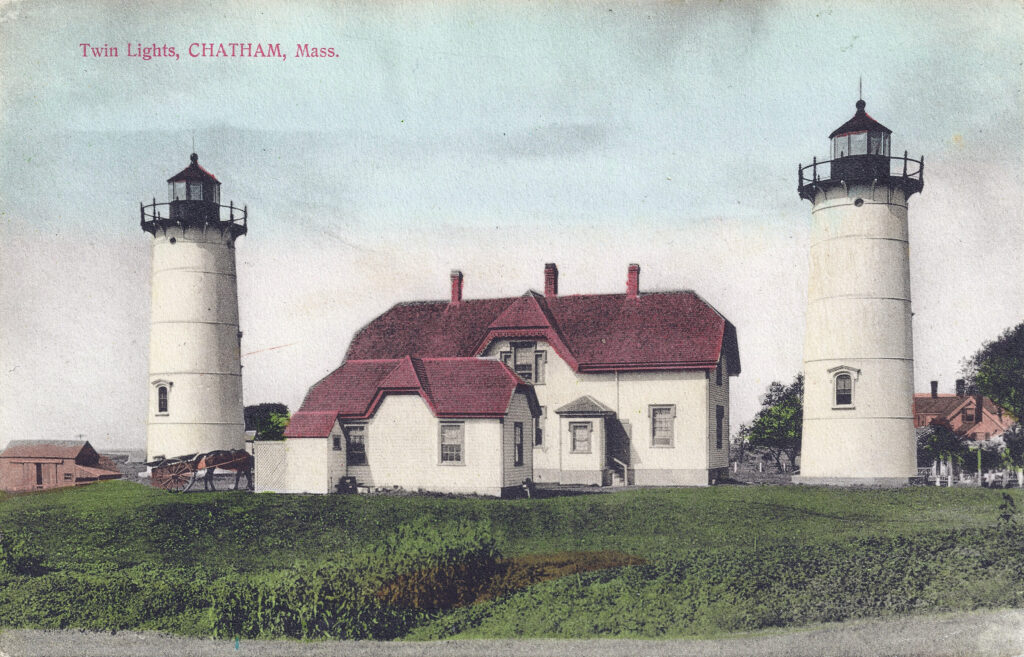
JEREMY
Today, Chatham Lighthouse stands on a U.S. Coast Guard station. John Geurtsen is the vice commander of the U.S. Coast Guard Auxiliary Flotilla 11-1, which serves the Cape Cod area. Among other things, John is involved with the public tours of Chatham Lighthouse. I recently had a chance to sit down and talk with John Geurtsen about the public tours and Chatham Lighthouse. Let’s listen to that interview now.
MUSIC INTERLUDE
JEREMY
We are here at Chatham, Massachusetts, on Cape Cod. We’re here at the Chatham Lighthouse today. And thanks so much for spending some time with me today, John. I really appreciate it.
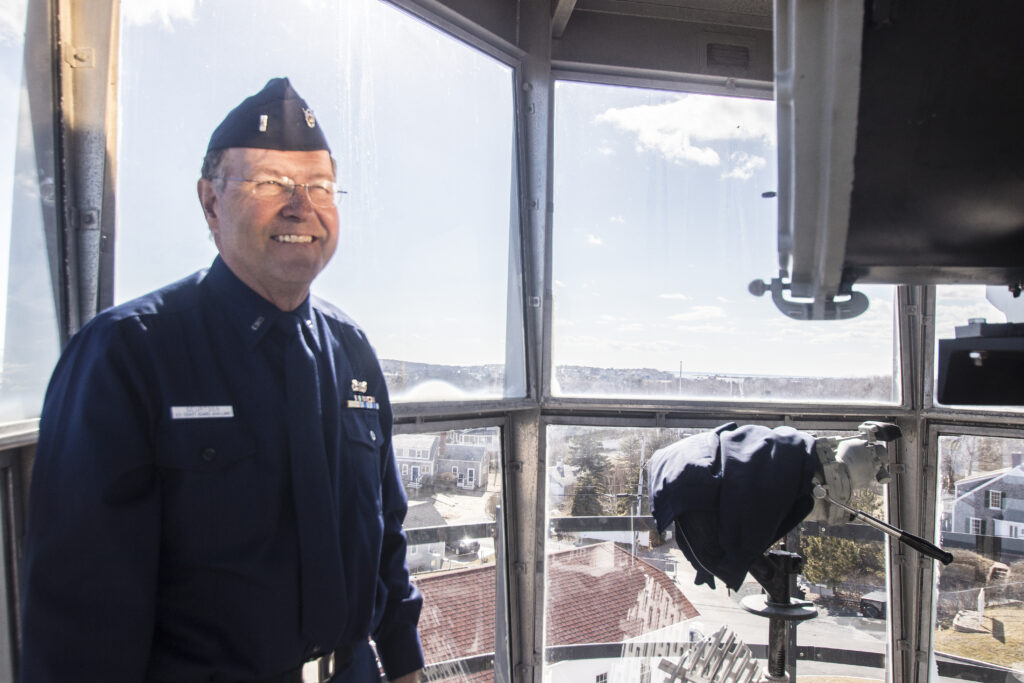
JOHN GEURTSEN
It’s my pleasure, Jeremy, to have you here. Welcome.
JEREMY
Thank you. So first of all, I don’t want to assume that all our listeners necessarily know exactly what the Ccoast Guard Auxiliary is. So, John, could you start by telling us a little bit about what the Coast Guard Auxiliary is and does?
JOHN GEURTSEN
I certainly can, Jeremy, it’s a pleasure to actually tell you about that before we start about the lighthouse. The Coast Guard Auxiliary is a uniformed, all volunteer component of the U.S. Coast Guard. We support them through their activities at the lighthouse or at the station here, through things like we have a gentleman in the kitchen or several people in the kitchen as aux chefs. We have people doing watchstanding at the radio. Several of our members are doing that. We support them in patrols and training exercises with our vessels and even have opportunities to work with them on their vessels. So we do a lot of work directly with the Coast Guard in support of them. Beyond that, the Coast Guard Auxiliary really is focused on supporting boating safety for the recreational boaters. So we’ll do boat safety classes. We’ll do vessel examinations for safety, for recreational boaters. And we’ll do it just a variety of things with local marinas in support of safe boating.
JEREMY
I’ve read that more than 90,000 people have toured Chatham Lighthouse since tours began more than 25 years ago. That’s extremely impressive. Are the lighthouse tours something auxilarists enjoy being involved with?
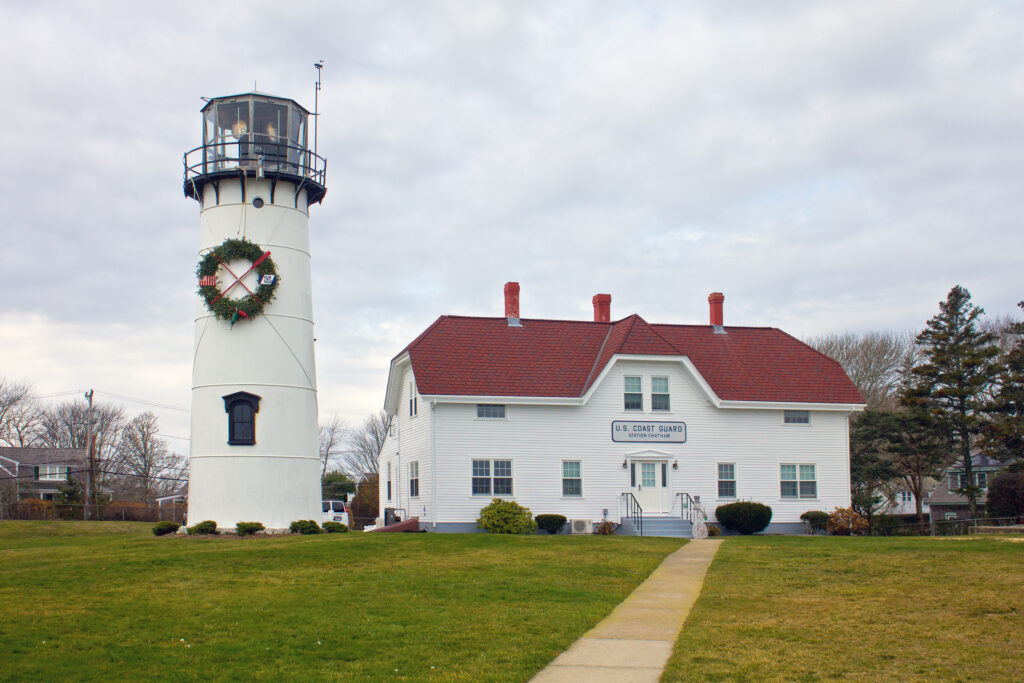
Photo by Jeremy D’Entremont
JOHN GEURTSEN
Oh, they certainly do. As a matter of fact, when I first joined the auxiliary six years ago, one of the first things that I looked to join and participate in, in support of the auxiliary, was the lighthouse tours — being just a fantastic landmark and a great way to meet not only other auxiliarists, but the general public and people from all over the world. It was just a fun thing that I wanted to get involved with. And it’s not very difficult for me to get 20 or 25 volunteers annually to do this tours from our Auxiliary group, because they all love doing it.
JEREMY
That’s fantastic. Can you describe how the tours typically work when the lighthouse is open for the public? What is the experience like for visitors?
JOHN GEURTSEN
When they come into the property and this is on Coast Guard property, they come to the lighthouse and I typically greet them there, or the lighthouse keeper will greet them there. And then they are in small groups and they enter the lighthouse. And then in the base of the lighthouse, we have an auxiliarist that talks about the history of the lighthouse and some aspects of the lighthouse from that section. Once that’s done, they move up 44 steps up to the oil deck and there’s an auxiliarist there. And at the oil deck the auxiliarist will talk about some of the early fuels for the fire, because it wasn’t electric when it started. And they’ll finish that and then they’ll progress up an eight-step ladder to the lantern room. And at Chatham Light they’re actually able to walk around the revolving lantern and see the view. And also, obviously be sensitive about that. There’s a light right there. So the people will get a historical background starting way back in 1808 when we say Thomas Jefferson was our president and gave the Town of Chatham monies to build the lighthouses — and that’s plural — all the way through the changing of the fuels and the way the mechanism was rotated and the lights and the power and so forth. So they get a nice history, but we always remember that they really want to come for the view. So I tell my tour guides, just remember that they really want to see the beautiful view, 80 feet above the water, and not to get too hung up on the history. But we have a lot of people from like the U.S. Lighthouse Society and other groups that love the history part. And we love to share what knowledge we have of the wonderful history of that lighthouse.
JEREMY
Sure. Well, Chatham Light Station does have a really interesting history. Of course there were two lighthouses originally at Chatham. Can you say, just to maybe touch on a couple of the most interesting parts — what you think are the most interesting parts of the history that you talk about during the tours?
JOHN GEURTSEN
Just as I said earlier, the fact that in 1808 they had two lighthouses built. They were built out of wood. We talk about that they were near the water and because of financial reasons, and also because there was not a lot of stone around Cape Cod, they were made out of wood, But as we all know, wood in salt water in a wet environment doesn’t last long. So we discuss that in 1841, two more lighthouses were built and they were moved back from the water, and they were made out of brick. So they were getting a little smarter with what to build them with. But we talk about that the brick was fine, but then erosion occurred and then erosion caused them to build two more lighthouses in 1887 [sic: they were built in 1877.]
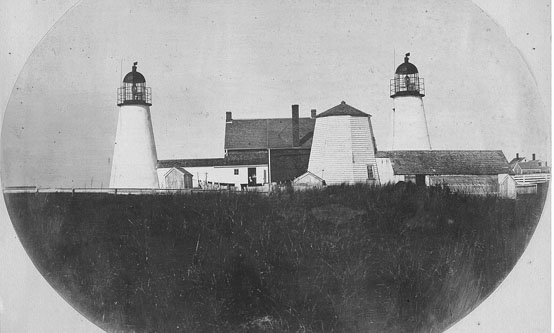
And you’re standing in one of them now. The other one would eventually become Nauset Light. And that’s another part of the history, how two lighthouses became one. And just briefly, the reason there were two was that Highland Light was the first lighthouse on Cape Cod. And that was 1797. And when Chatham wanted a light, the government says, yes, you can have monies for light, but you need to build two, so we can differentiate your part of Cape Cod from Provincetown area. So you’ll build two lights. And eventually there were three lights built in Eastham, which is called the Three Sisters, which is interesting in itself.
JEREMY
What else do people see when they come to Station Chatham. There’s an interesting boat on the grounds, right?
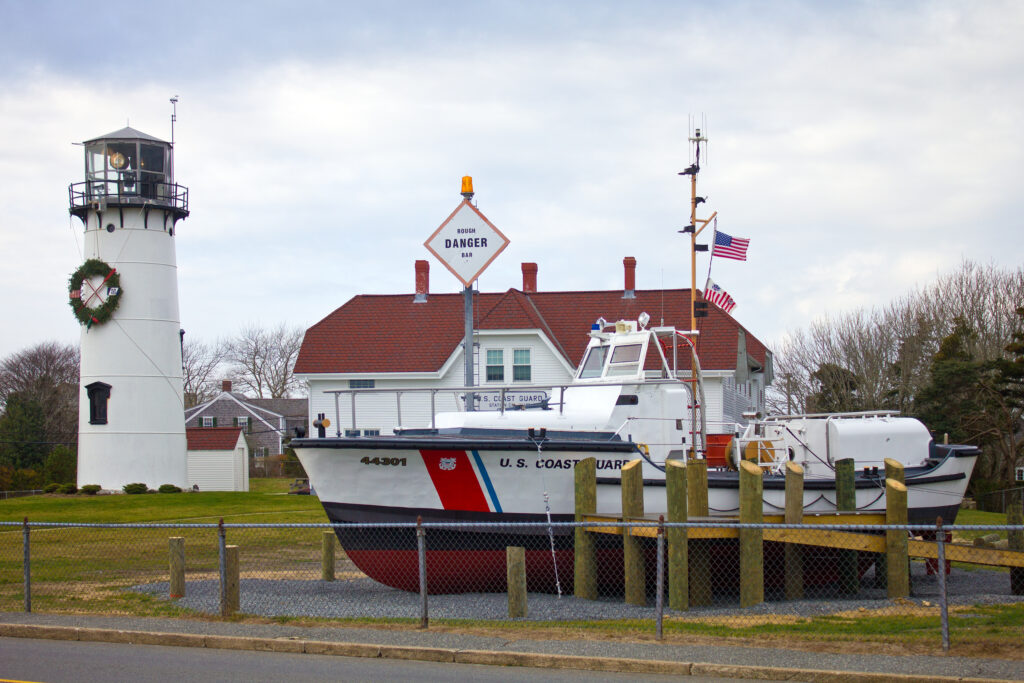
JOHN GEURTSEN
Right. We have the 44301 vessel that succeeded the 36500, the famous 36500 boat, but the 44-footer now is on our property. So as part of our tours, we have an auxiliarist just at the boat, talking about the design and the unique design of that style boat, that was designed specifically for the shallow waters of the Chatham area. It was the first of its production model and the last of that production model to retire, because it was so valuable to the environment that we have in Chatham. And we’re very fortunate to have it on our grounds.
JEREMY
Of course, the Chatham Coast Guard Station is famous or very well known to many people for the famous rescue in 1952 of the Pendleton crew, which is immortalized in the book and movie The Finest Hours. And is that something that’s also talked about on the lighthouse tours?
JOHN GEURTSEN
It certainly is now that the movie has been out and many, many people know about it. But I’m amazed how many people actually don’t. So when I’m standing at the base of the lighthouse waiting to let people enter the base, I talk about some of the other things they can see in the area, including a discussion of the 36500, because during the summer months, the 36500 — the actual boat — is in Rock Harbor in Orleans. And I suggest to people that are interested to go to take the 10-mile drive and see that 36500. Actually, Jeremy, the boat is in our garage right now being painted and is being readied for the summer months. So it is out of the water. It actually spends the winter in the water because it’s a wooden boat and they don’t want it to crack, so they have to keep it moist and it sits in the winter in a protected harbor. But now it’s getting some painting and getting ready for a launch after Memorial Day.
JEREMY
Okay. I should mention we’re recording this in May, but people will be hearing this in the podcast in about mid-July.
JOHN GEURTSEN
Oh, it’s so it’ll definitely be in the water then over at Rock Harbor in Orleans. And it’s a wonderful, wonderful thing to see the actual boat from 1952 there.
JEREMY
Yeah. Well, that’s really good to know. And another thing is that not far from the Coast Guard station and the lighthouse, really just a couple of minutes away down the road, is the Atwood House Museum of the Chatham Historical Society, which has a display — basically it’s the old lantern room of the Chatham Lighthouse. The old lantern of the lighthouse was replaced by a a larger, more modern-style lantern when they switched to a rotating aerobeacon type of light. I believe was that early 1950s, if I remember —
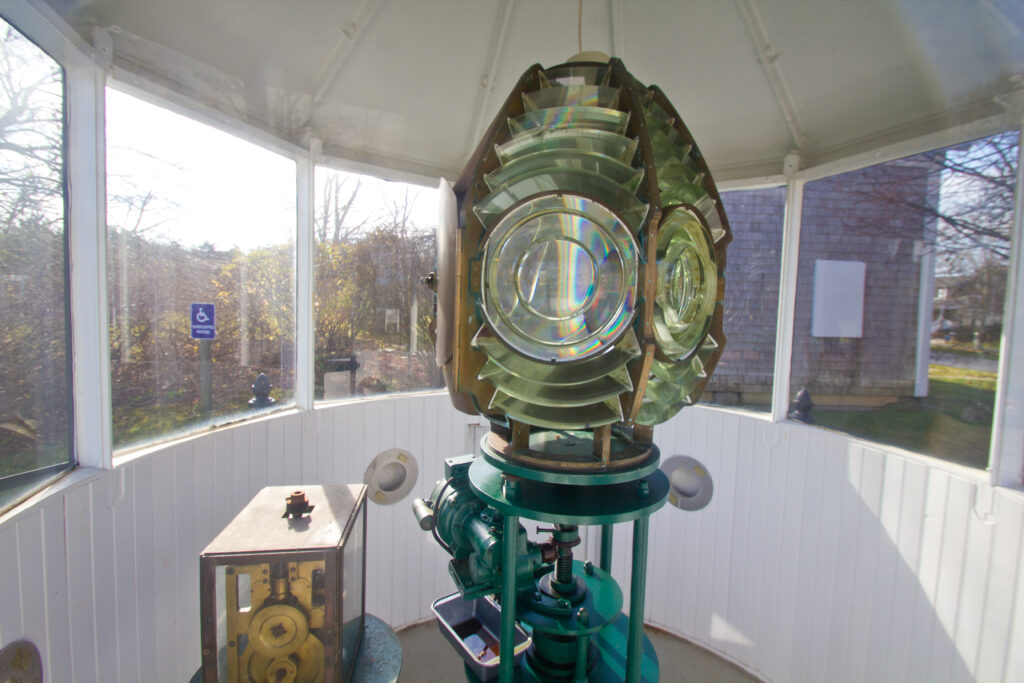
Photo by Jeremy D’Entremont
JOHN GEURTSEN
Well, actually later. It was in the sixties, the sixties that that one was moved over there.
JEREMY
Well, when that was replaced, the old lantern was put over at the Atwood House Museum and the old fourth order Fresnel lens from the lighthouse is on display inside that lantern room. It’s a beautiful display outside the Atwood House Museum, but also there’s a lot of good things to see inside the Atwood House Museum as well.
JOHN GEURTSEN
There certainly is. And I just happened to see the other day online that they’re getting ready to open up their new season. And they listed that they’re having some displays on the Lifesaving Service at the Atwood, as well as a history of the Coast Guard in one of their rooms. And if I believe if they haven’t changed it, they had the bow section, a life-size model of the bow section of the 36500, where people can actually go into the bow section and feel what it was like to cram in there, like these 36 people that came back from that Pendleton story we were talking about in The Finest Hours. But they made a replica of the bow section. So people can go inside and see how tight that had to be for people when they had that rescue. So that’s kind fun to do that. So it’s over on Harbor Road, it’s only a couple of miles from here. So people that come to Chatham to hopefully see our lighthouse can also go see that museum. It’s a wonderful museum in Chatham.
JEREMY
That’s great. And even if they come to the lighthouse at a time when the Atwood House Museum is closed, they can still go and on the grounds and see the display with the lantern and the Fresnel lens on display, on the grounds. That’s accessible all the time. Before we close this interview, John, is there anything you’d like to add? Anything you’d like to say to visitors who might be coming to see the lighthouse? Anything we haven’t touched on already?
JOHN GEURTSEN
Well, I, just hope that this has interested a few people to come and visit me and come visit on the days that we’re open and enjoy the views that we have and get a lot more history than we we’ve been able to talk about today. It’s a fascinating location at the elbow of the Cape — wonderful views on a sunny day. And I just wish and hope that some people come visit us, right.
JEREMY
There are more details about Chatham Lighthouse and the open houses on the Coast Guard Auxiliary Flotilla 11-1 website. Am I saying that right, John? 11-1, or should I say 11 dash one?
JOHN GEURTSEN
Either way; we say them both.
JEREMY
Okay. Uh, on the Coast Guard Auxiliary Flotilla 11-1 website. Just Google Chatham Lighthouse tours. You’ll find it very easily. So John Geurtsen, thank you again for spending time with us today and telling us about the public tours at Chatham Lighthouse. I appreciate it.
JOHN GEURTSEN
My pleasure, Jeremy.
MUSIC
JEREMY
Time now for our lighthouse history segment. We’re going to talk today about the first lighthouse built in the American colonies, commonly known as Boston Light.
MICHELLE
Boston’s deep and spacious harbor led it to become the commercial center of America in colonial days. At that time, all large vessels had to enter the harbor between the Brewster Islands in the outer harbor and Point Allerton in the town of Hull.
JEREMY
Early in 1713, a prominent Boston merchant named John George representing the business community of the city, proposed to the general court, the “ erecting of a lighthouse and lantern on some headland at the entrance to the harbor of Boston for the direction of ships and vessels in the nighttime bound into the said Harbor.”
MICHELLE
On July 23, 1715, the general court of Massachusetts passed the Boston Light bill. A stone tower was built at a cost of 2,385 pounds. The exact dimensions aren’t known, but it’s believed the tower was at least 50 feet tall. The first keeper, 42-year-old George Worthylake lighted the lighthouse on Friday, September 14, 1716.
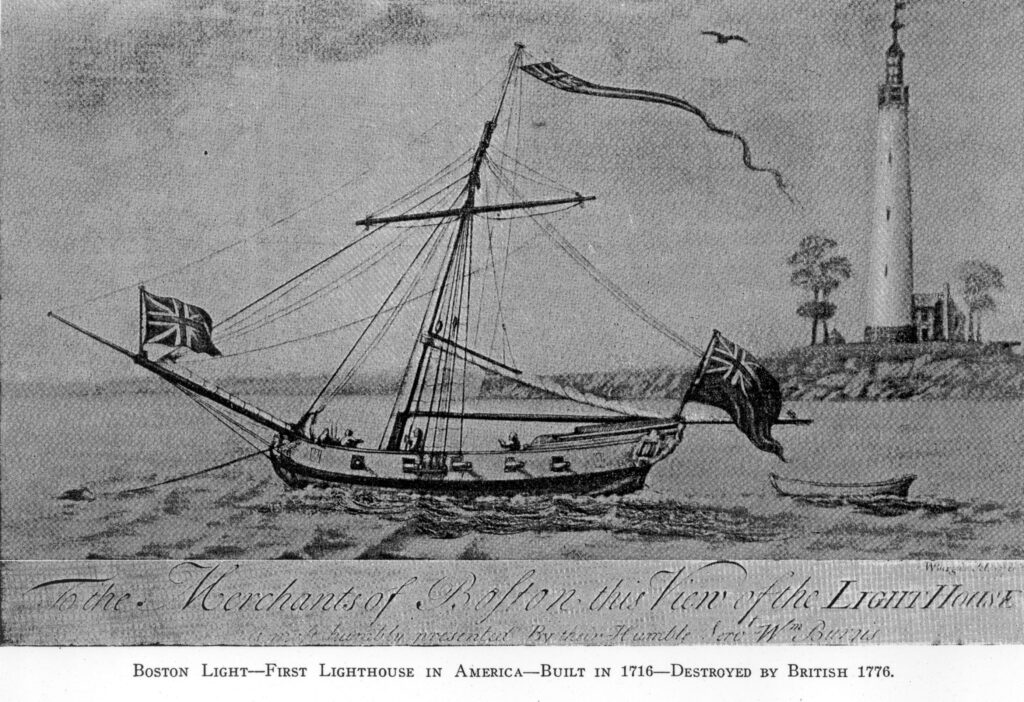
JEREMY
No description of the original lighting apparatus survives, but it’s believed that it was “first lighted by tallow candles.” Worthylake, who was brought up on Georges Island in Boston Harbor, moved to the light station with his wife, Ann, and their daughters, Ruth and Ann. Two African slaves named Shadwell and Dina and a servant lived at the lighthouse as well. Worthylake also maintained a farm on Lovell’s Island, closer to Boston.
MICHELLE
Worthylake was paid £50 a year, which was raised to £75 in 1717. He made additional money as a harbor pilot for incoming vessels, and he also kept a flock of sheep on Great Brewster Island. Fifty-nine of his sheep were caught on the long sand spit off Great Brewster during a 1717 storm; they drowned when the tide came in.
JEREMY
In early November 3, 1718, Worthylake went to Boston with his wife, their 15-year-old daughter Ruth, and his servant George Cutler. On the way back they stopped at Lovell’s Island, where they boarded a sloop heading for Boston Light. A friend, John Edge, accompanied them. Witnesses later said that the party were seen to eat and drink “very friendly” while aboard the sloop, “tho not to excess.” The sloop anchored near Little Brewster Island a few minutes past noon, and the slave Shadwell paddled out in a canoe to transfer the party to the island.
MICHELLE
Young Ann Worthylake and a friend, Mary Thompson, watched from shore. Suddenly, the two girls on shore saw “Worthylake, his wife & others swimming or floating on the water, with their boat Oversett.” The canoe—possibly overloaded—had capsized, and all six people drowned. George, Ann, and Ruth Worthylake were buried beneath a triple headstone in Copp’s Hill Burying Ground in Boston’s North End.
JEREMY
Benjamin Franklin, 12 years old at the time, was urged by his brother to write a poem based on the disaster. The young Franklin wrote a poem called “The Lighthouse Tragedy” and hawked copies on the streets of Boston. Franklin later wrote in his autobiography that the poem was “wretched stuff,” although it “sold prodigiously.”
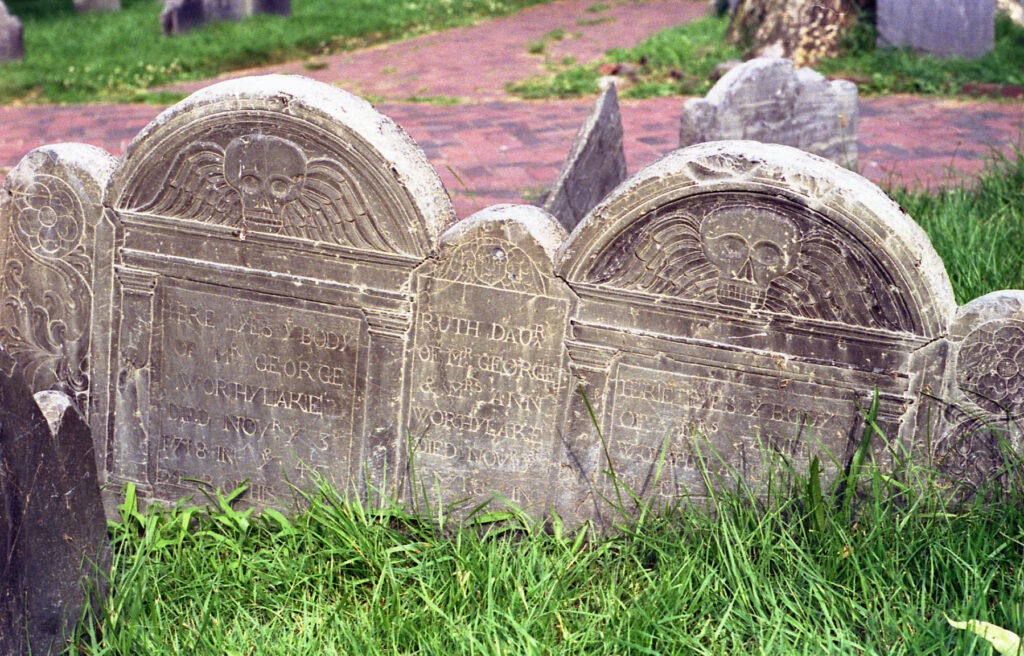
MICHELLE
Robert Saunders, a former sloop captain, became Boston Light’s second keeper on a temporary basis, until a new permanent keeper could be chosen. Saunders drowned in a boat accident a few days after taking the job. John Hayes, an experienced seaman described as an “able-bodied and discreet person,” became the next keeper.
JEREMY
In the next edition of Light Hearted we’ll continue with the early history of Boston Light.
MICHELLE
It’s time for our trivia question. Hopefully people have been listening closely, so they’ll know the answer.
JEREMY
And what is the question?
MICHELLE
Okay. Here’s the question. What was the name of the slave who lived at Boston Light and died in November 1718, along with the first lighthouse keeper? Again, what was the name of the slave who lived at Boston Light and died in November 1718, along with the lighthouse keeper?
JEREMY
The first person to answer correctly gets a copy of the book Lighthouses of America, published in association with the U.S. Lighthouse Society. It’s a beautiful 176-page hardcover book featuring stunning photographs of lighthouses across the country taken by Society photographers.
The second person to answer correctly gets an official U.S. Lighthouse Society passport. The Lighthouse Passport Program provides enthusiasts the opportunity to help preserve lighthouses as well as a wonderful way to keep a pictorial history of their lighthouse adventures. You can learn more about the passport program at USLHS.org.
To enter, send your answer in an email to me at jeremy@uslhs.org. Be sure to say that you are answering the trivia question in Light Hearted episode eleven, and again, send it in an email to jeremy@uslhs.org. That’s j e r e m y at U S L H S dot o r g. And again, the first two people to answer correctly will win prizes.
MICHELLE
That wraps up another edition of Light Hearted.
JEREMY
We will be back with two more editions for Cape Cod week later this week, so watch for those.
MICHELLE
Special thanks to the staff and volunteers of the U.S. Lighthouse Society, including everyone out at the Point No Point Light Station in Hansville, Washington. Be sure to check out the USLHS website at USLHS.org for information on the tours offered by the Society, as well as information on memberships and information on how you can stay overnight at Point No Point Light Station.
JEREMY
Along with lots of other information on lighthouses. There’s really tons of material to explore at USLHS.org. There’s also the USLHS news blog at news.uslhs.org, which includes the Lighthouse News of the Week on Fridays and other original content. And there are also the USLHS social media pages on Instagram, Twitter, and Facebook.
MICHELLE
And I hope some of our listeners will be able to visit us at our open houses at Portsmouth Harbor Lighthouse in New Castle, New Hampshire, through Columbus Day weekend in October, every Sunday afternoon from 1 to 5 p.m.
JEREMY
And if they do that, they get to meet some of us in person. What a thrill that would be.
MICHELLE
That would be very exciting for them. I think.
JEREMY
Thank you, Michelle. And next time on Light Hearted, keep a good light.
MUSIC
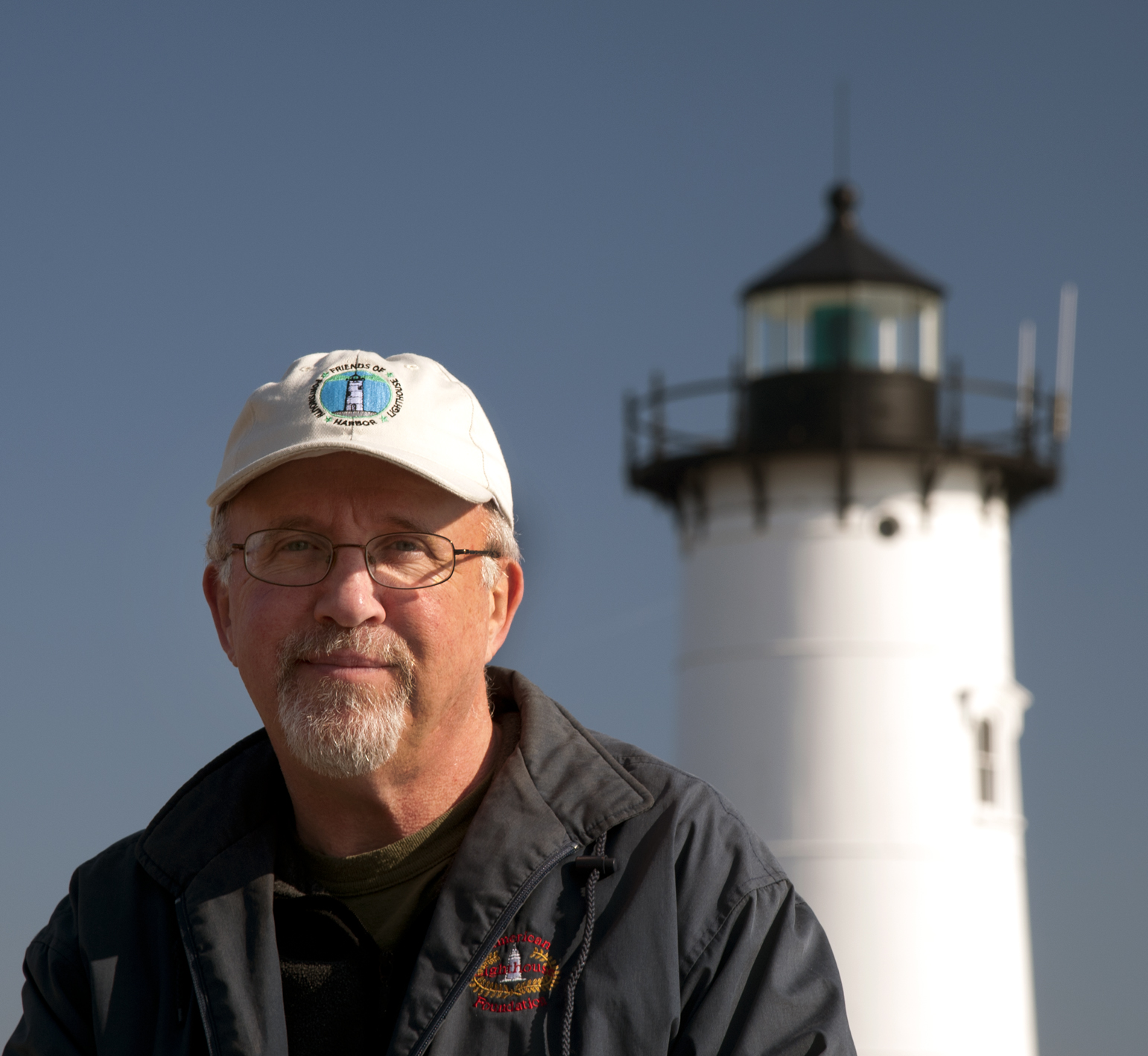
Jeremy D’Entremont is the author of more than 20 books and hundreds of articles on lighthouses and maritime history. He is the president and historian for the American Lighthouse Foundation and founder of Friends of Portsmouth Harbor Lighthouses, and he has lectured and narrated cruises throughout the Northeast and in other regions. He is also the producer and host of the U.S. Lighthouse Society podcast, “Light Hearted.” He can be emailed at Jeremy@uslhs.org

